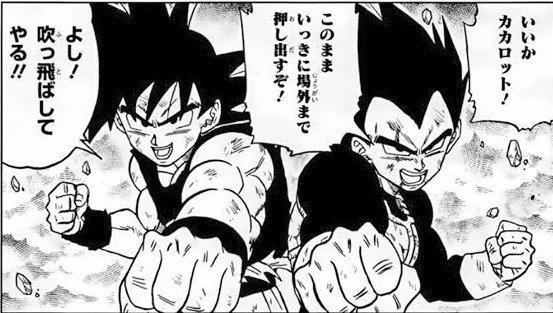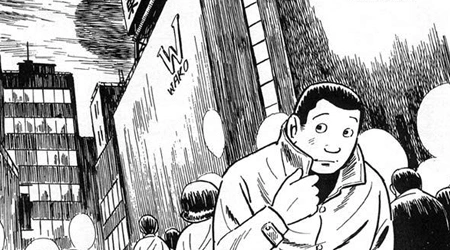The History of Gekiga
by David Fox
With a long history deeply rooted in the rich Japanese art, manga are one of the most fascinating phenomena in Japan and the whole world. Manga serves a multitude of purposes and covers all sorts of topics. They also address a wide range of audiences including men and women of all ages and interests.
It’s been over two centuries since the word “manga” was first used in 1798 to describe the picture book “Shiji no yukikai.” Since this time, the manga medium has evolved and developed drastically.
Manga history is much more complex than just a straight line from Tezuka to “Dragon Ball” and “Naruto.”

Among the many styles of Japanese comics is the field of gekiga, epitomized by the recently-released anthology “Ax” from Top Shelf Publishing.
Gekiga is a Japanese term for comics that literally means “dramatic pictures”. The term itself was coined by the famous artist Yoshihiro Tatsumi in 1957.

The History of Gekiga
In the early 1950s, mainstream manga came from Tokyo and was aimed at children, led by the work of Osamu Tezuka. Artists such as Yoshihiro Tatsumi and Masahiko Matsumoto admired Tezuka’s work and his cinematic style.

However, Tatsumi and some of his colleagues were not interested in making comics for children. They wanted to write comics for adults that were more graphic and showed more violence.
They did not want their work to be known by the common term manga or “whimsical pictures”.
In 1959, Tatsumi, Matsumoto and Takaro Saito, as well as five other artists from a group called “Gekiga Kobo” wrote a gekiga manifesto which they sent to magazines and newspapers, and this was the official founding of gekiga as a movement.

The group, however, didn’t really last long in any official capacity, but the influence of gekiga and its manifesto would continue far into the future.
For example, two major texts heavily influenced by gekiga, sometimes even considered gekiga texts, Goseki Kojima and Kazuo Koike’s “Lone Wolf & Cub” and Tada Saito’s “Golgo 13” were both published in relatively mainstream comics magazines – “Lone Wolf & Cub” in Weekly Action Manga from 1970 to 1976, and “Golgo 13” in Big Comics from 1968 to the present. Yes, the present.

Gekiga artists explicitly target adult audiences, and their stories are often dark and violent. Gekiga often feature urban, gritty settings and real-life drama. The artists also encourage an aesthetic shift. They tend to replicate cinematic techniques on paper.
They don’t just want to get the story out as efficiently as possible. In fact, they want to focus on a character’s interior life, their setting’s details, and their experience of time.
The Impact of Gekiga

Though gekiga was a moderate success, it did not have nearly the impact on Japanese culture that the counterculture comics had on American culture in the 1960s and ‘70s. Alternative manga movements such as gekiga slowly faded into near obscurity, and were soon replaced in ideology by the Nouvelle Manga movement.

The Nouvelle Manga movement is an artistic movement which gathers Franco-Belgian and Japanese comic creators together, to create a comic that tells everyday stories of great literary and aesthetic value: highly recommended for juvenile and adult readers.
Legacy of Yoshihiro Tatsumi

Though Yoshihiro Tatsumi is considered to be the grandfather of gekiga, the first true alternative comic genre in Japan, his accomplishments have gone mostly unnoticed in Japan in recent years, mostly due to the rampant commercialization and high export demand of more traditional forms of manga.
Tatsumi spent 11 years working on “A Drifting Life”, an 820-page graphic memoir detailing his career as a manga and gekiga artist, beginning with his experiences as a child in Osaka at the end of the Second World War and continuing to 1959, when gekiga began to take shape as an independent style in Japanese manga culture.

For a long time gekiga was not translated into other languages, but after 2000 more and more publishers dedicated to graphic novels began to explore the history of this manga style.
More recently, publishers like Drawn & Quarterly began publishing several English editions of works by Tatsumi and Yoshiharu Tsuge, among others, reaching more audience in the Western world, rather than being relegated to a specific societal corner of the globe.
To find out more about gekiga and Yoshihiro Tatsumi’s work, please watch these videos:
Thanks for reading! Feel free to share your opinion in the comments section.

About David Fox
David Fox is an artist who created davidcharlesfox.com to talk about art and creativity. He loves to write, paint, and take pictures. David is also a big fan of spending time with his family and friends.
Leave a Reply
 |
 |
 |
 |
Just Art and Fun
Now get FREE Gifts. Or latest Free phones here.
Disable Ad block to reveal all the secrets. Once done, hit a button below
 |
 |
 |
 |